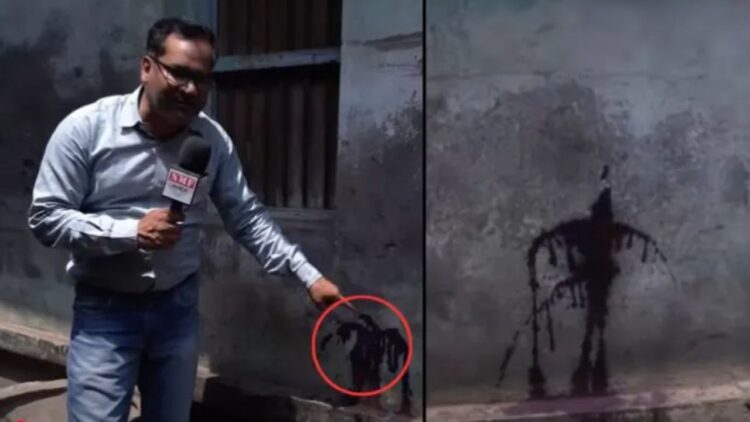Days after widespread violence erupted in Murshidabad district, disturbing details have emerged indicating that Hindu homes were deliberately marked in advance to facilitate targeted bombing and arson. According to a ground report by NMF News published on Thursday, April 17, the attackers used black ink to identify Hindu residences, which were then selectively targeted during the riots.
Journalist Pankaj Prasoon, reporting from the ground, revealed that the markings served as a guide for the rioters. “They have made these markings so that rioters can know which house needs to be bombed and which house needs to be set ablaze,” he stated. He further explained that every Hindu home in the area had been marked with black ink prior to the violence, and only those homes were attacked during the riots. Speaking to local residents, Prasoon confirmed that violent mobs entered Hindu-dominated lanes and focused exclusively on houses that were pre-marked.
The large-scale violence unfolded on Friday, April 11, in the Muslim-majority district of Murshidabad, particularly in the areas of Suti and Samserganj. The unrest broke out shortly after Jumma Namaz, under the guise of protests against the newly enacted Waqf Amendment Act. What began as demonstrations quickly turned into organized assaults, with Muslim mobs unleashing mayhem in several localities.
Among the worst affected were Hindu-owned businesses. In one such incident, a Hindu couple’s sweet shop, named ‘Subha Smriti Hotel,’ was completely destroyed. The owner, visibly shaken and in tears, pointed to the remains of his shop and said, “I had a sweet shop here.” His wife added, “They took away all our belongings, including cash kept inside the shop… There is nothing left. How will we eat now?”
Another establishment, the ‘Sri Hari Hindu Hotel & Lodge,’ was also targeted and vandalized. Visuals of the destruction were later shared by news agency ANI, showing shattered interiors and burnt possessions.
Reports also surfaced of attacks on Hindu temples in the district. A video released by Republic Bangla featured Trinamool Congress MP Khalilur Rahaman, who openly admitted that a temple in Jangipur had been vandalized during the violence. According to India Today, multiple homes belonging to Hindu families in the minority-dominated district were ransacked and set on fire. The report further stated that even an ambulance caught in the chaos was not spared—it was torched after the driver was dragged out and brutally beaten.
An eyewitness recounted the horror to India Today, saying, “We were scared and sitting inside our homes. I had kept my parents, wife and children at home.” He confirmed that the attackers were local Muslims, not outsiders. CCTV footage that surfaced online later showed a man attacking and damaging a Hindu family’s vehicle during the rampage.
One of the victims, speaking to ANI, described the scene with anguish. “They have destroyed and torched bikes, looted our belongings and set shops on fire,” he said. “I couldn’t sleep at night. We were awake and in fear. There was no police force when violence was being carried out here. The cops were running for their lives… Let us see if the government gives us compensation.”
In another harrowing account, Manju Bhagat, the wife of Hindu trader Amar Bhagat, shared her ordeal with Aaj Tak. “They (the mob) tried to enter through the front gate. When they failed, they attempted to enter through the back gate,” she said. “They broke the bike, vandalised our home, and looted everything—from chairs and mattresses to our TV and other expensive household items.” With a trembling voice, she added, “Our whole family was praying to God. We were risking our lives and hiding on the terrace. We were chanting God’s name and hoping the mob would leave. What would I have done if something had happened to my daughter at that moment?”
As the violence escalated and the police remained either absent or overwhelmed, panic spread across Hindu neighborhoods. Fearing for their lives, thousands of Hindus fled their homes. Many took to boats and escaped to the neighbouring Malda district in search of safety.
The scale and coordination of the attacks have raised serious concerns over law enforcement failure and the growing communal tension in West Bengal. Despite the visuals, eyewitness accounts, and ground reports, official action remains minimal, and affected families continue to wait for justice and rehabilitation.















Comments